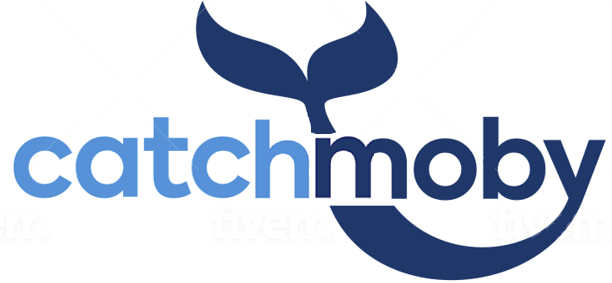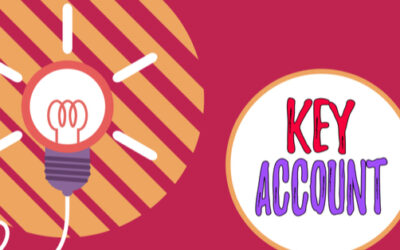🔥 You treat enterprise accounts like any other account! 🔥
Most sales reps may have a few large targets in their territory mixed in with SMB targets and they tend to follow the same process and treat everyone the same. It is the classic “bird in the hand, two in the bush” syndrome. They don’t want to dedicate time to the larger accounts for fear of losing “low hanging fruit” or smaller accounts. Closing these smaller accounts shows progress, gets them paid some commission and helps them to keep their job a little while longer.
The problem is that while enterprise deals offer a huge reward they also require a totally different approach which takes more time, more energy and even more team members. It is not easy to qualify a large account that may have many different points of contact and many different business units. You wont be able to understand the pain points after only a few calls and you will need to do some intensive research to really understand why your solution or offering is good for the customer. If you simply toss them into the funnel like all of your other prospects you will never really scratch the surface and build or create anything meaningful that would make the prospect want to engage with you.
🔥 You focus on Revenue instead of Relationship! 🔥
We all know that at the end of the day the goal of sales is to bring in revenue. But there is rarely a direct path to closing revenue. You need to meet with customers to understand their needs and motivations and then to position your solution with an undeniable benefit and return on investment. This is more straightforward with smaller accounts and smaller deals. When you are dealing with larger deals, the prospect tends to start thinking of you as a partner. And if they are willing to spend a lot of money on your solution then it must be mission critical to your business.
Once you are seen in this light, feature functions and even pricing become less important. Your relationship now becomes a priority. If they are going to make a multi-year commitment to you with a hefty annual cost then they are going to want to be reassured that you can be a partner and not just a vendor. They want to make sure that working with you is a frictionless experience, that your company will be able to develop your solution, to keep in line with industry trends and that when sh*t hits the fan you are there for them. Most reps who aren’t dedicated enterprise reps don’t think this way – they are too focused on short term gain. But there is a reason that enterprise reps are biding their time, constantly meeting new contacts and building trusting relationships – they know one or two deals can make their whole year!
🔥 You don’t follow a process! 🔥
We know two things with certainty: 1. Larger accounts take longer to close and require a methodical process to be successful. 2. Salespeople hate both of those things. It’s not to say that salespeople are not disciplined or that they don’t use a million tools to track prospects, activities, internal tasks, etc. But it is just that – they are used to tracking tasks rather than creating an overarching plan of how to build a long-term relationship with a client. I liken it to the director of a play. Some directors like to have a long checklist for opening night – are the lights set, are the actors ready, are the stage props prepared, etc.
Others will instead take a step back and first try to understand how the audience will experience the play and then will prioritize tasks based on improving that experience. With larger accounts you need to be the latter. You should be focusing and prioritizing your efforts based on the level of relationship you need with each of the decision makers and influencers at your customer. We call that the SALT methodology
- S – Make your customers SEE your value
- A – Show them how they will ACHIEVE that value
- L – The stage where a customer begins to LISTEN to you as a trusted advisor
- T – The nirvana of the buying relationship – TRUST
You should have a relationship map built out and your goal is to progress each of the main contacts towards a trusting relationship. You also need to make sure that each of the boxes are checked around Financials, Technology, Relationship, Logistics, Credibility, etc. If you can track each of these and have a detailed plan in place for you and your virtual team members to follow, you are on the way to closing the big deal!
🔥 You’re not personal enough! 🔥
Everyone loves their AI, automation and now their ChatGPT. And these tools have made a huge impact on selling to smaller accounts and even with researching and prospecting for lager accounts. But at the end of the day there is no substitute for personal communication. It’s no coincidence that while corporations are talking about AI and automation, consumers are increasingly valuing a personalized experience that makes them emotionally connected to the brand. It seems as though they are going in opposite directions.
The larger the account or deal that you are trying to sell the more personalized your outreach will need to be. Especially now in a down economy where people are fearful of losing their jobs, or have picked up the slack for the others that have left, you need to craft a meaningful and personalized message that will not only resonate with your customer but build a personal relationship. You need to cut through the noise of your competitors and show that you are willing to invest time in getting to know your customer and what they value most. These are the sales reps that they will call upon when they need something. Think of not only personalizing emails with some relevant details, but also creating engagement with landing pages that are specific to a prospect so they have one place to go to access all the information they need to make a decision.
🔥 Your teams are not aligned! 🔥
We have all heard it takes a village to raise a child. Also, in Alaska there are villages that hunt whale and then distribute the meat and every part of the whale so the whole village eats. When we say village, you instantly get a sense of community and collaboration and others looking out for your well being. Hunting large accounts should be no different. Whether you have a dedicated team or you corral a virtual team, everyone needs to be aligned and moving towards the same goal. Of course the most difficult relationship I have found is between sales and marketing. They are compensated differently and they have different goals. While marketing is raising awareness, gauging intent and sourcing leads, sales is focused on closing deals in specific accounts.
In order to be successful with large accounts you need sales, marketing, research and sales enablement functions all focused on the small subset of large accounts you are targeting. The engagement and touch points created by the team need to have the same tone and messaging and need to guide the customer through their buyer’s journey and make it as frictionless as possible. Marketing may need to create custom collateral to address a specific customer concern or research may need to work overtime to uncover a compelling fact that helps you connect with one of the decision makers. If you are able to assemble this team and they stay focused and aligned, then the sales rep can stay focused on their task which is personally engaging with the customer and closing the deal.
As you can see, hunting and landing a large account or what we call a “whale” takes different tools (harpoon versus a net), a different team (virtual account team vs just a sales rep) and a different approach (hunting versus fishing). Unfortunately, Ahab never did catch Moby Dick – he became tangled in his lines and pulled overboard. We at 🐳 CatchMoby 🐳 help customers to focus on large enterprise accounts by giving them the tools, team and techniques their sales reps need to focus on selling and closing large enterprise deals.






0 Comments